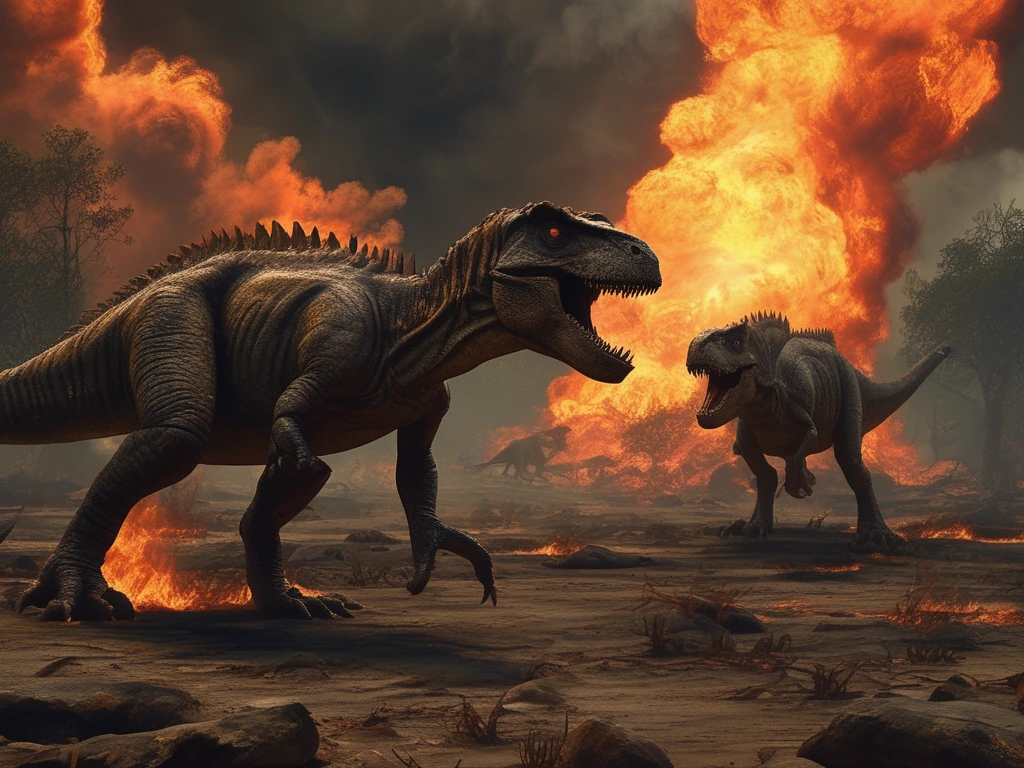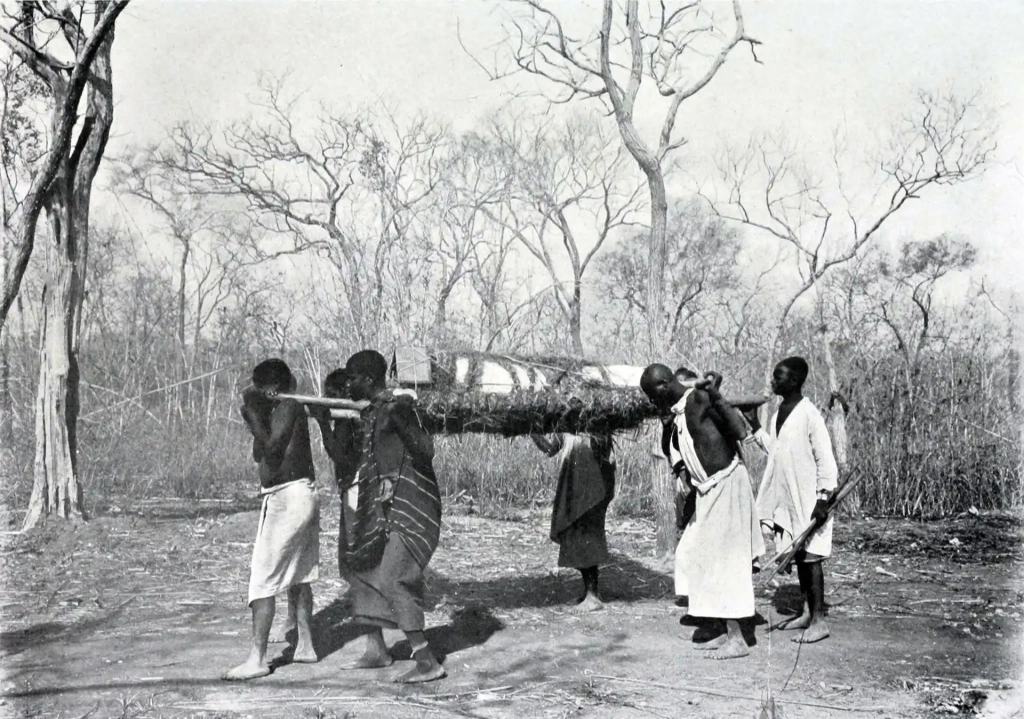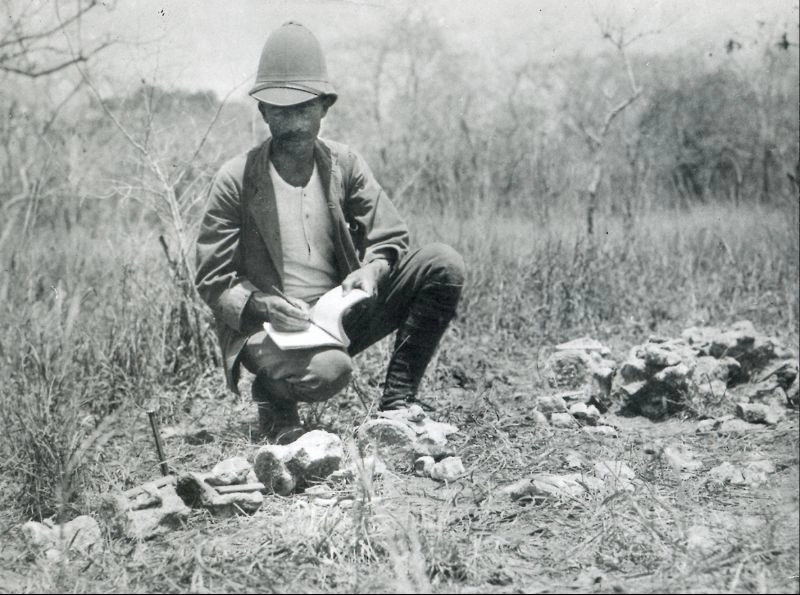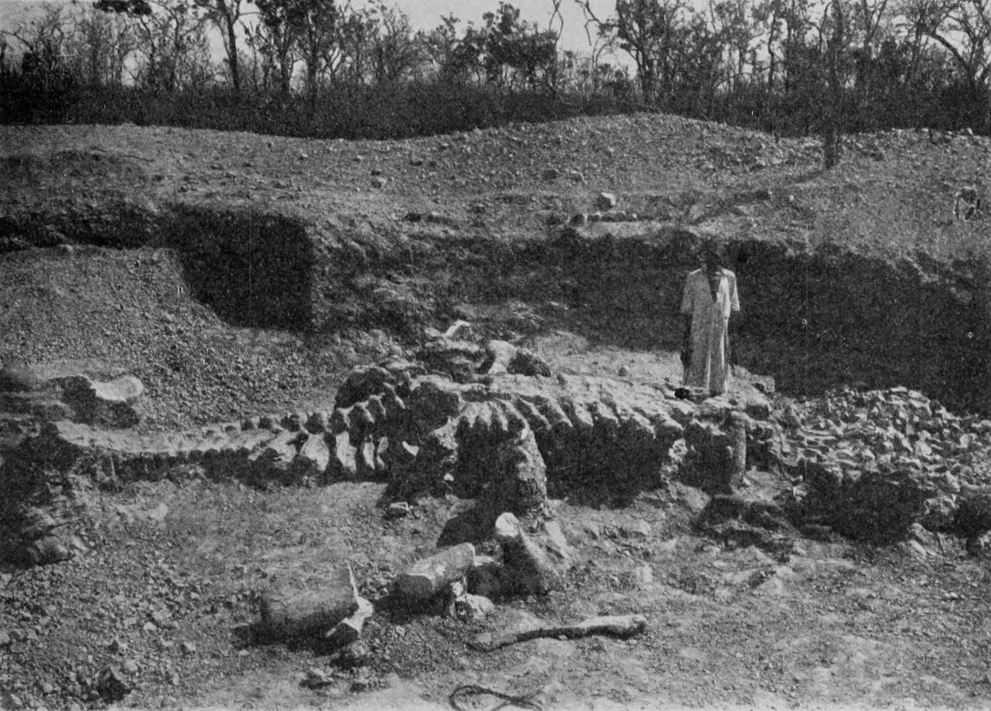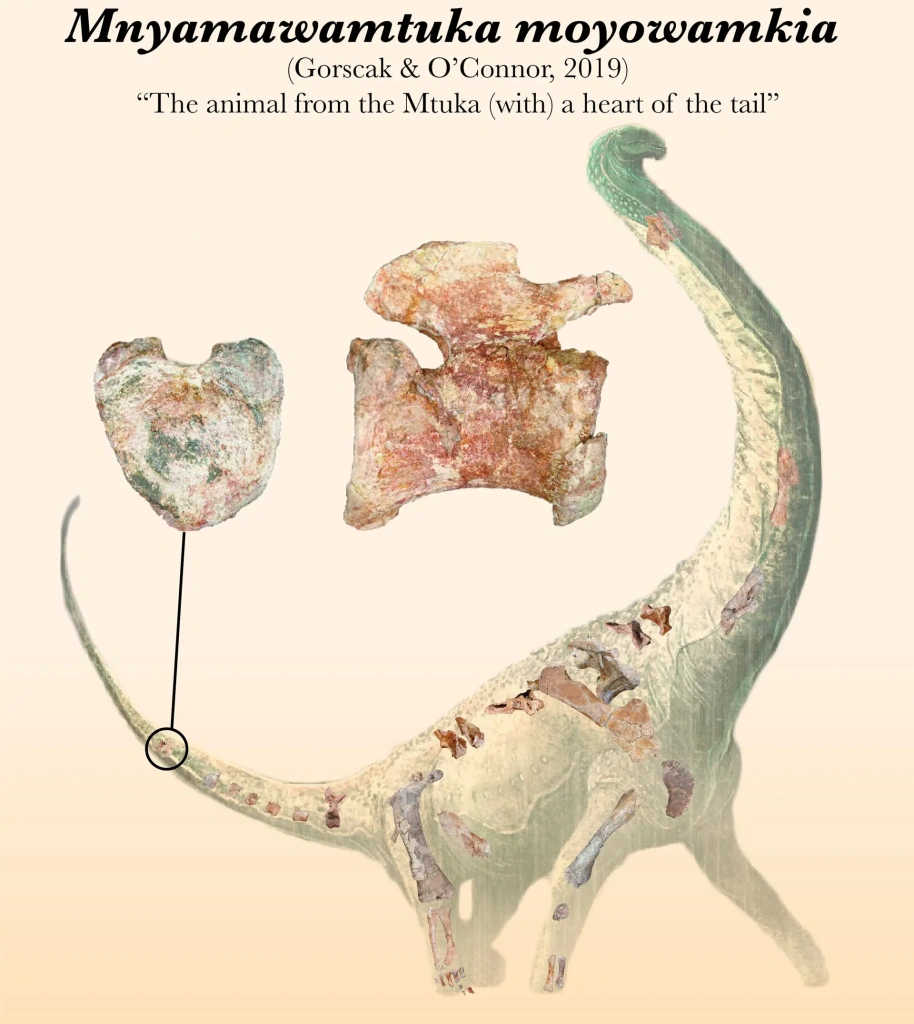Tanzania draws thousands of tourists each year, with many of them eager to climb Mount Kilimanjaro. Yet beyond its iconic peak, Tanzania has a rich collection of dinosaur fossils. Its vast "dinosaur graveyards" date back millions of years.
This article highlights discoveries from Tanzania's past, from the famous dinosaurs to early mammals.
The famous Giraffatitan from Tanzania
There is a dinosaur from Tanzania on display in Berlin's Museum of Natural History. This is a massive Giraffatitan skeleton that visitors have named Oscar. Standing 13 meters (45 feet) tall, Oscar's towering skeleton nearly reaches the museum ceiling. To understand its impressive size, imagine standing next to a four-story building and looking up at the roof.
The dinosaur roamed the Earth about 150 million years ago. For much of the last century, scientists believed it was the largest land animal ever. However, recent discoveries have challenged this view. Paleontologists have found bone fragments from Argentinosaurus, Puertasaurus, and Patagotitan that are estimated to have weighed between 50 and 80 tons. In comparison, Giraffatitan likely reached a maximum weight of about 48 tons.
Where and how did Giraffatitan live? Let’s travel back to the Jurassic period and imagine the lost world of dinosaurs.
Jurassic-period Tanzania
In those days, a single continent, Gondwana, included Africa, South America, and Australia. The landscape was filled with huge coniferous forests and ferns as flowering plants hadn’t yet evolved. Among these forests, lived herbivorous dinosaurs, like giant and .
During this period, all ecological niches were filled. and the earliest birds, which had developed feathers, soared above the forests. On the land, small mammals hid beneath ferns and , adopting a nocturnal lifestyle to evade predators. In the oceans, marine reptiles, fishes, and mollusks swam freely. Interestingly, crocodiles already existed, residing near rivers and swamps.
Herbivorous dinosaurs developed different traits to defend themselves against carnivorous . Many grew large and fast, while some, like stegosauruses, had spiked tails to keep predators at a distance. In those days, evolution was constantly shaping species and their unique features to help them survive and compete for resources.
However, 66 million years ago, a massive asteroid from the direction of Jupiter collided with the Earth. This impact created the Chicxulub crater, which measures 200 kilometers (125 miles) in diameter.
The shockwave spread across the planet, igniting massive fires from the sudden rise in air temperature. Powerful tsunamis surged. Enormous clouds of dust and sulfur gases billowed into the atmosphere, leading to acid rain. For an extended period, sunlight barely penetrated the atmosphere, resulting in a drop in temperature. Photosynthesis halted. Plants, algae, and phytoplankton began to perish, even in regions far from the impact site. As a result, herbivorous dinosaurs faced mass starvation. So did the large predators that depended on them for survival.
That's how all non-avian dinosaurs and many other large animal species went extinct. Small early mammals, birds, insects, and some reptiles were the only survivors.
What dinosaur fossils were found in Tanzania?
At the start of the twentieth century, the eastern coast of Africa, , was under the control of the German Empire. A German geographer, Hans Meyer, had already successfully climbed Kilimanjaro. German botanists were exploring the diverse plant life of the Amani Forest in the Usambara Mountains. At the same time, miners searched for mineral resources across the colony German East Africa.
Exploratory mines were established in Lindi, a southern region known for its rich mineral deposits. In 1906, a mining engineer, Bernhard Wilhelm Sattler, was investigating mineral ores. One day, he stumbled upon enormous bones while going to the mine. This discovery marked the first finding of prehistoric animal remains in the region. Notably, Hans Meyer played a significant role in drawing attention to this event. He wrote to the paleontologist Eberhard Fraas, urging him to rush to the discovery site.
Fraas arrived in Lindi and traveled to Tendaguru. There, he discovered dinosaur bones and confirmed their authenticity. Two skeletons were excavated, which later became the first specimens of new dinosaur genera: Tornieria and Janenschia. Fraas was struck by the abundance of dinosaur fauna at the site. However, he understood that extensive excavation would need additional funding.
The director of the Museum of Natural History in Berlin, Wilhelm von Branca, led this project. To attract the attention of wealthy patrons, he formed the Tendaguru Committee, a group of scientists and industrialists. Their work enabled large-scale excavations in Tendaguru, led by Werner Ernst Martin Janensch.
From 1909 to 1913, scientists found numerous partial skeletons of dinosaurs from the late Middle Jurassic to the Early periods. Among these was a previously unknown Giraffatitan brancai, named in honor of von Branca. Remarkably, it turned out to be the tallest skeleton ever found. It was discovered standing upright, indicating it had died while trapped in mud. The skeleton currently displayed in Berlin is a composite of several specimens.
During these early excavations, scientists collected 250 tons of fossil remains. They were transported to Europe, primarily to the Royal Natural History Collection in Stuttgart, where they are housed today. These include dinosaurs, Paleogene mammals, pterosaurs, extinct fish, and even invertebrate remains. Additionally, paleontologists described numerous new species from these findings.
Researchers discovered several other dinosaurs, including predator Elaphrosaurus, and two herbivorous, Dicraeosaurus and Kentrosaurus. The latter was adorned with numerous plates and spikes along its body. Notably, nearly a quarter of all the findings are associated with Dicraeosaurus. The abundance of its fossils suggests that these 13-meter-long dinosaurs grazed in large herds.
Scientists also found thousands of bones belonging to Dysalotosaurus, a small herbivorous dinosaur. From Latin, its name translates to "elusive lizard." The species was formally named Dysalotosaurus lettowvorbecki in tribute to Paul Emil von Lettow-Vorbeck. During World War, this elusive German commander employed guerrilla tactics in Tanganyika.
After Germany lost control of Tanganyika, British researchers continued excavations at Tendaguru from 1924 to 1931.
New discoveries in Tendaguru and Galula
The Tendaguru turned out to be the richest on the African continent, containing most of the region's Late Jurassic fossils. It resembles the Morrison Formation in North America, with an additional marine interbed fauna layer. Tendaguru also yielded remains of ancient crocodilians, early mammals, fish, amphibians, and invertebrates.
In 1912, German geologist Hans Reck led field expeditions at Tendaguru. Interestingly, the names of Wilhelm von Branca and Hans Reck, involved in these excavations, would later reappear in another archaeological site, Olduvai Gorge. In 1960, Olduvai became globally famous when the first ancestors of modern humans were discovered there. This event earned Tanzania the title "Cradle of Humanity."
In the twenty-first century, supposed dinosaur eggs were found in Tendaguru. However, little is known about this discovery.
Research on previously unearthed bones continues, leading to updates in the classification of dinosaurs. Occasionally, headlines announce the discovery of a "new" species. For instance, in 2019, Wamweracaudia karanji, a large, four-legged herbivore, was reclassified. It had initially been mistakenly assigned to a different genus named Gigantosaurus robustus. These fossils were originally excavated during that early twentieth-century German expedition.
In 2022, Tendaguru was added to the tentative list of UNESCO World Heritage Sites because of its significant paleontological value. The number of fossil fragments and their scientific importance are often likened to those of Dinosaur Provincial Park in Alberta, Canada.
Tanzanian geology today
Tendaguru is not the only notable excavation site in Tanzania. In the early 2000s, Tanzanian researchers, with support from scientists at Ohio University, began excavations in the Rukwa Rift Basin, southwestern Tanzania. Almost immediately, they uncovered intriguing finds: bones of a dinosaur from the Cretaceous period. This species is now known as Shingopana songwensis. "Shingopana" comes from , meaning "broad neck." This 8-meter-long (25-foot) sauropod is still being studied, and many details about it remain unknown.
In 2004, scientists discovered a new sauropod, Mnyamawamtuka moyowamkia. Its genus name reflects the dinosaur’s origins, as "Mnyama wa Mtuka" means "Beast of the Mtuka" in Swahili. It was named after the nearby Mtuka River, where its bones were found. The species name, "moyo wa mkia", translates to "heart of the tail." This is a reference to the heart-shaped vertebrae in this dinosaur’s tail.
The discovery only made headlines 15 years later when scientists published their findings. It was revealed that this dinosaur belongs to the and is also one of its earliest representatives. Researchers gathered numerous bones from a single skeleton, representing a major breakthrough in understanding titanosaur evolution.
Here is a short video from the excavation site. Paleontologists had to use climbing ropes to extract the fossils from the riverbed's vertical wall.

Other dinosaurs have also been discovered at this site, resulting in the identification of new species. For instance, in 2014, researchers announced the discovery of the titanosaur Rukwatitan bisepultus.
Beyond Tendaguru and Galula, other formations have also yielded intriguing discoveries. East of Lake Nyasa, (or Lake Malawi), researchers have been studying the Ruhuhu River basin since the 1930s. This formation is called Manda. It is particularly significant for the discoveries of early dinosaur ancestors, dinosauriforms. Discoveries from this area could greatly improve our understanding of dinosaur evolution.
"We cannot rely only on the fossils that were discovered by Germans many years ago. Let us also research extensively on discovering other remains, as the Egyptians have been doing in their country," said Jakaya Kikwete, the ex-president of Tanzania, in 2023.
Where to see Tanzanian dinosaurs?
Most of the dinosaur skeletons discovered in present-day Tanzania are exhibited in museums. The Museum of Natural History in Berlin is one of the primary locations.
For more information about Tanzanian dinosaurs, visit the London Natural History Museum's website. It offers a variety of materials about dinosaurs that are sure to capture your interest.
The Dinosaur Database website provides key facts about each Tanzanian dinosaur species. The fan site Fandom also has a list of Tanzanian dinosaurs, with information in a Wikipedia-style format.
We will monitor news and hope for a flourishing of excavations in Tanzania in the near future. Tanzania holds many unexplored secrets, and we will likely learn new and surprising things about Earth's past.
All content on Altezza Travel is created with expert insights and thorough research, in line with our Editorial Policy.
Want to know more about Tanzania adventures?
Get in touch with our team! We've explored all the top destinations across Tanzania. Our Kilimanjaro-based adventure consultants are ready to share tips and help you plan your unforgettable journey.


















